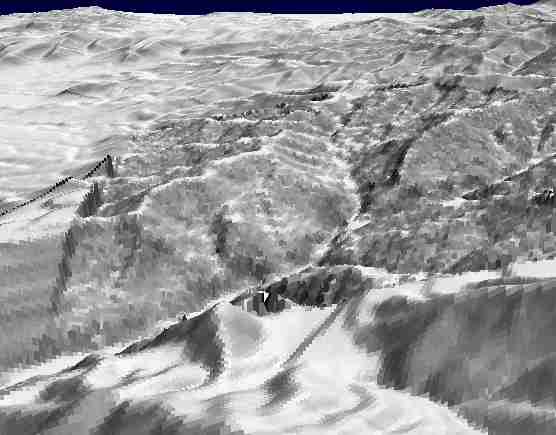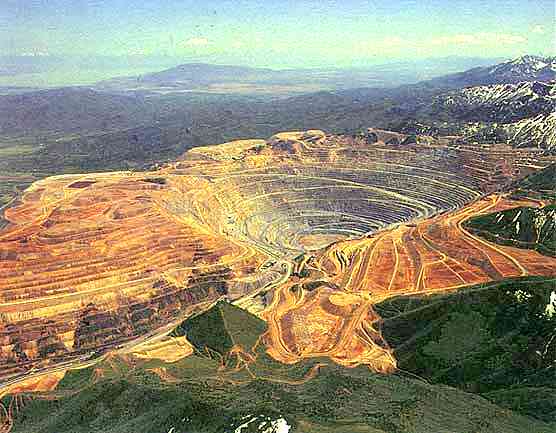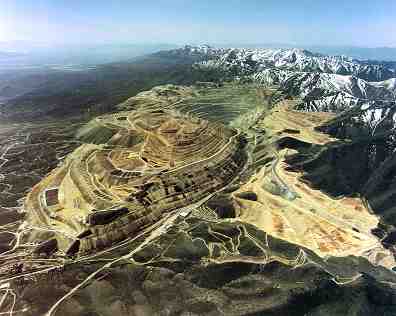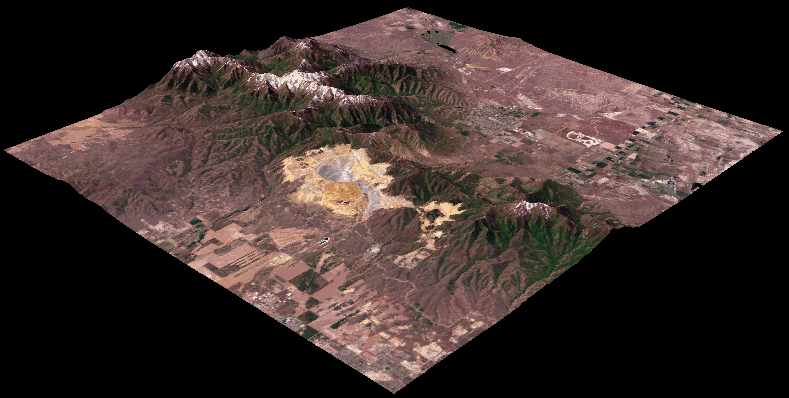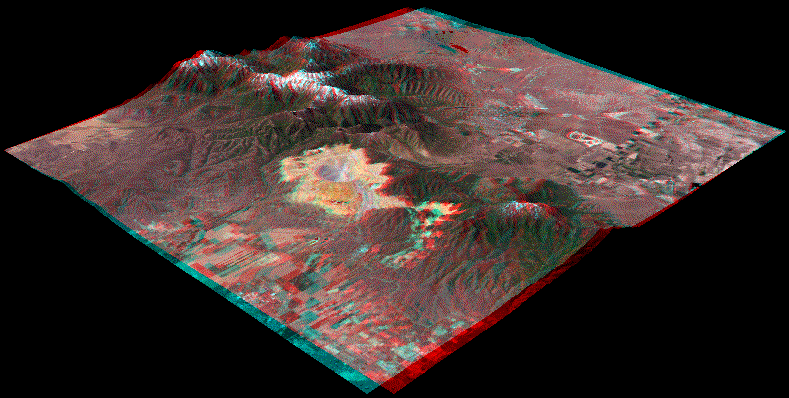Here is an aerial photograph of Bingham Canyon as it appears today. A hundred years ago there was a mountain where today there is an open pit mine, and billions of tons of rock have been hauled away, much of it short distances to fill in neighboring canyons, as shown in the view below.
An aerial photograph of Bingham Canyon that was made about 1990. The development of a mine of this size requires the technology to transport large amounts of waste rock away from the ore, then to transport the ore to a site where it can be processed. For every ton of ore hauled, three tons of waste must be moved out of the way.
Since 1904 the mine has produced 17 million tons of copper, 23 million ounces of gold, 190 million ounces of silver, and 890 million pounds of molybdenum. This is greater than the combined output of the California Gold Rush, the Comstock Lode of Nevada, and the Klondike Gold Rush.
